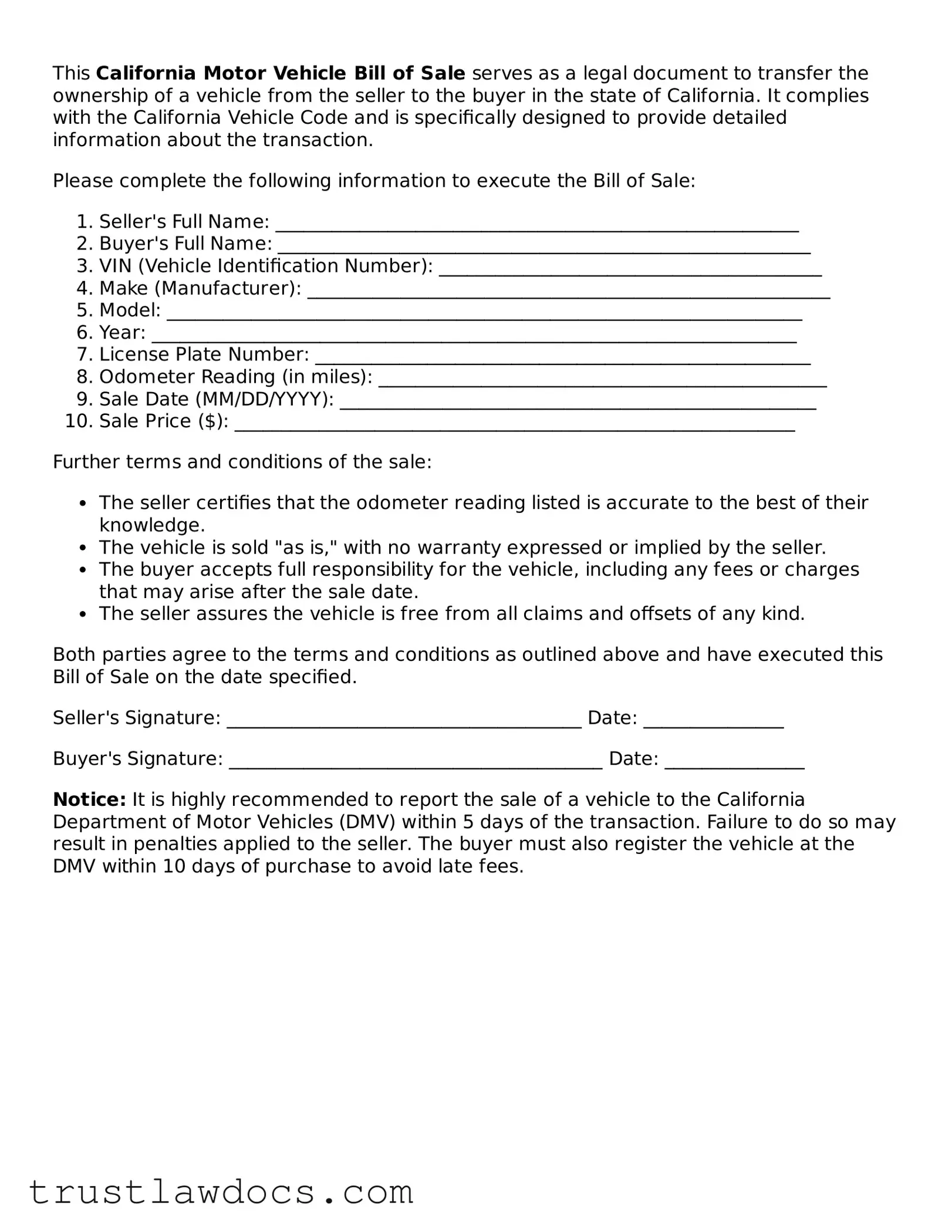The California Motor Vehicle Bill of Sale form shares similarities with a Warranty Deed in the realm of real estate. Both documents serve as proof of transfer of ownership, but their assets differ—vehicles for the former and real estate for the latter. Yet, each provides critical information including the details of both the seller and buyer, a description of what is being sold, and the terms of the agreement. These documents essentially offer peace of mind that the transaction has been formalized and recorded properly.
Similar to a Quitclaim Deed, the Motor Vehicle Bill of Sale form ensures the transfer of ownership rights from one party to another. A Quitclaim Deed is typically used to transfer property rights without a traditional sale, often between family members or to clear up a title issue, while the Motor Vehicle Bill of Sale is used for the sale and purchase of a vehicle. Both, however, finalize the transaction and make it official, signifying the buyer's new rights to the property or vehicle in question.
The General Bill of Sale form is quite akin to the Motor Vehicle Bill of Sale, as both are used to transfer ownership of personal property. The difference lies in their specificity; while the Motor Vehicle Bill of Sale is exclusively for vehicles, the General Bill of Sale can pertain to any type of personal property like electronics, furniture, or other tangible goods. Nonetheless, they share the common purpose of documenting the transaction and safeguarding both parties against future disputes.
Negotiable Instruments, such as promissory notes, bear resemblance to the Motor Vehicle Bill of Sale in their functionality of guaranteeing certain rights and actions between parties involved in a transaction. A promissory note spells out the terms under which one party promises to pay another a specific sum of money, either on demand or at a future date. Like a bill of sale, it provides a legal framework that outlines the agreement's specifics, offering clarity and legal protection, though it focuses on payment rather than the transfer of ownership.
The Motor Vehicle Bill of Sale and a Receipt share a common basic function—they both acknowledge that a transaction has taken place. A receipt is a more general acknowledgment of payment received for goods or services, lacking the detailed terms of ownership transfer found in a bill of sale. However, both serve as important records of a transaction, providing evidence that can be critical for accounting purposes or in the event of a dispute.
Partnership Agreements, while focusing on the relationship and terms between business partners, echo the Motor Vehicle Bill of Sale in their establishment of terms between parties. Though the former outlines the operation of a partnership and the latter the sale of a vehicle, both set forth agreements that are intended to prevent misunderstandings and conflicts by clearly documenting the rights, responsibilities, and expectations of all parties involved.
Similarly, the Employment Contract parallels the Motor Vehicle Bill of Sale in its function of formalizing an agreement, but between an employer and an employee rather than a buyer and seller of a vehicle. This document outlines the terms of employment, including salary, benefits, and duties, offering a clear understanding and expectations for both parties. Just as the Bill of Sale helps to prevent disputes over the sale of a vehicle, the Employment Contract aims to minimize disagreements between employer and employee by having a mutually agreed-upon document.
